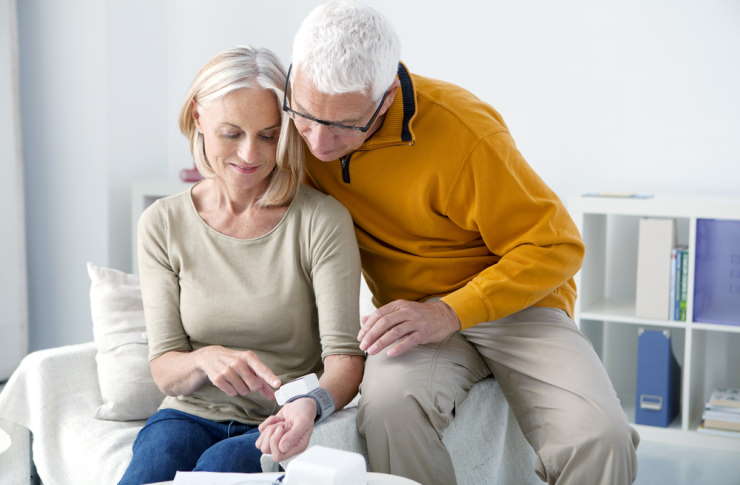Essential Mobility Gadgets for Seniors to Consider
Modern technology offers numerous solutions to help seniors maintain independence and improve their quality of life. From smart home devices to wearable technology, mobility gadgets have become increasingly sophisticated while remaining user-friendly. These innovations address common challenges faced by older adults, including safety concerns, communication needs, and physical limitations that may affect daily activities.

As the population ages, technology continues to evolve to meet the unique needs of seniors who want to maintain their independence while staying safe and connected. The mobility gadget market has expanded significantly, offering devices that range from simple emergency alert systems to sophisticated smart home integration platforms. Understanding the available options can help families make informed decisions about which technologies might benefit their loved ones most.
What Are the Most Important Mobility Gadgets for Seniors?
Several categories of mobility gadgets have proven particularly valuable for seniors. Medical alert systems remain among the most popular choices, providing 24/7 monitoring and emergency response capabilities. Smart home devices, including voice-activated assistants and automated lighting systems, help seniors control their environment with minimal physical effort. Wearable fitness trackers monitor health metrics and can detect falls, while smartphone apps designed for seniors offer simplified interfaces for communication and daily tasks.
GPS tracking devices provide peace of mind for both seniors and their families, especially for those experiencing early stages of cognitive decline. Medication management systems ensure proper dosing schedules, while mobility aids with built-in technology enhance traditional walkers and canes with features like LED lighting and stability alerts.
Understanding Mobility Gadgets for Seniors Price Ranges
The cost of mobility gadgets varies significantly based on functionality and sophistication. Basic medical alert pendants typically start around $20-30 per month for monitoring services, while more advanced systems with GPS tracking and fall detection can range from $40-70 monthly. Smart home starter kits generally cost between $100-300, depending on the number of devices included.
Wearable devices designed for seniors range from $50 for basic fitness trackers to $300 for comprehensive health monitoring watches. Smartphone solutions vary widely, with senior-friendly phones starting at $100 and tablets optimized for older adults ranging from $150-400. Installation and setup services, when required, typically add $50-150 to the initial investment.
Comprehensive Mobility Gadgets for Seniors Price Guide
When budgeting for mobility technology, it’s important to consider both upfront costs and ongoing expenses. Many devices require monthly service fees, particularly those offering monitoring or emergency response services. Some insurance plans may cover portions of medical alert systems, especially when prescribed by healthcare providers.
Bulk purchasing or family plans can reduce per-device costs for households with multiple seniors. Many manufacturers offer trial periods, allowing users to test devices before committing to long-term contracts. Refurbished or previous-generation models often provide significant savings while maintaining essential functionality.
Key Mobility Gadgets for Seniors Price Insights
Several factors influence pricing in the senior mobility gadget market. Brand reputation, feature complexity, and service quality all impact costs. Devices with cellular connectivity typically carry higher monthly fees than those relying on home WiFi networks. Professional installation services, while convenient, can double the initial setup cost.
Seasonal promotions and senior discounts are commonly available, particularly during health awareness months or holiday seasons. Some utility companies and insurance providers offer rebates for smart home devices that improve safety or energy efficiency. Comparing total cost of ownership over 2-3 years provides a more accurate picture than focusing solely on upfront prices.
| Device Category | Provider/Brand | Monthly Cost | Initial Cost | Key Features |
|---|---|---|---|---|
| Medical Alert System | Life Alert | $50-70 | $0-100 | 24/7 monitoring, GPS tracking |
| Smart Home Hub | Amazon Echo | $0 | $50-100 | Voice control, smart device integration |
| Senior Smartphone | GrandPad | $60 | $0 | Simplified interface, family connection |
| Fitness Tracker | Fitbit Versa | $0 | $150-200 | Health monitoring, fall detection |
| Medication Dispenser | PillPack | $0 | $0 | Automated sorting, delivery service |
Prices, rates, or cost estimates mentioned in this article are based on the latest available information but may change over time. Independent research is advised before making financial decisions.
Choosing the Right Mobility Technology
Selecting appropriate mobility gadgets requires careful consideration of individual needs, technical comfort levels, and budget constraints. Start with the most critical safety concerns, such as emergency response capabilities, before adding convenience features. Many seniors benefit from gradual technology adoption, beginning with one or two devices and expanding their system over time.
Consider the learning curve associated with each device and available support resources. Some companies specialize in senior-friendly customer service, offering patient technical support and simplified user manuals. Family involvement in the selection and setup process often improves long-term adoption and satisfaction rates.
The mobility gadget landscape continues evolving rapidly, with new solutions emerging regularly to address the changing needs of aging populations. While technology cannot replace human care and connection, these tools can significantly enhance independence, safety, and quality of life for seniors who choose to embrace them. Careful research and gradual implementation help ensure that technology serves as a helpful companion rather than a source of frustration in the golden years.




